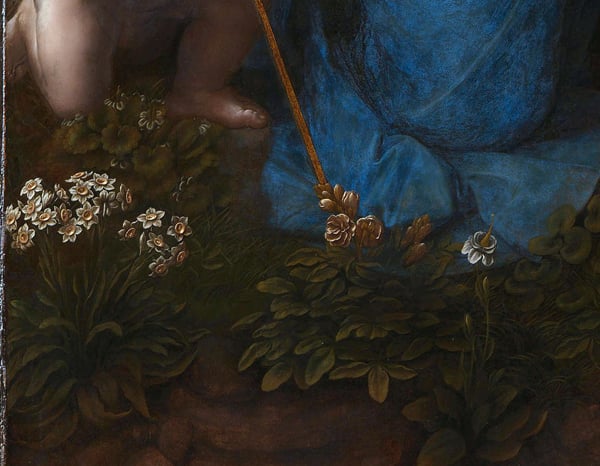Art & Exhibitions
Authenticity of Leonardo’s ‘Virgin of the Rocks’ Under Scrutiny
Floral inaccuracies suggest the painting may not be the master's work after all.

Floral inaccuracies suggest the painting may not be the master's work after all.

Coline Milliard

The clue is in the daffodils. New research published by geologist and art historian Ann Pizzorusso suggests that inaccurate vegetation in the version of Leonardo da Vinci’s Virgin of the Rocks (1483-86) held in the National Gallery in London could prove that the piece is not actually the work of the Renaissance painter.
As first reported in the Guardian, such an error would be surprising coming from an artist who considered an almost-scientific faithfulness to nature to be a foundation for art making—all the more so since the other version of the painting, which is part of the Louvre collection in Paris, is very precise in its depictions of rocks and plants.
“The botany in the Louvre version is perfect, showing plants that would have thrived in a moist, dark grotto,” Pizzorusso told the Guardian. “But the plants in the London version are inaccurate. Some don’t exist in nature, and others portray flowers with the wrong number of petals.” Pizzorusso published this new research in her book Tweeting da Vinci.
“It seems unlikely the same person could have portrayed rock formations so accurately in the Louvre work and so incongruously in the National Gallery one—especially considering Leonardo’s faithfulness to nature,” she added. “There is absolutely nothing in his body of work that is not true to nature.”

Leonardo da Vinci, Virgin of the Rocks (detail, 1483-86)
Courtesy the National Gallery, London
According to the Guardian, the National Gallery’s official line is that the Louvre’s version gets its “spiritual flavor” from its realism, while the London painting pictures “an ideal world.”
Yet Pizzorusso’s theory corroborates doubts that the institution itself has had over the authenticity of the Leonardo painting in the past. For decades, the piece was thought to be by followers of the Florentine artist. It was only when it was restored in 2010 that the idea that it might in fact be the real deal took hold.
Pizzorusso is backed by leading horticulturalist John Grimshaw. Talking about the plants in the London painting, he explained: “They go against everything that Leonardo’s always done in terms of his botanical art. They’re not real flowers. They’re odd concoctions, like a half-imagined aquilegia. And looking at the daffodil, for example, the flowers are OK, but the plant is not right.”
For Michael Daley, director of art restoration watchdog ArtWatch UK, this latest piece of research could well be “the nail in the coffin of the attribution to Leonardo.”
For more da Vinci mysteries see “Was the Mona Lisa Leonardo’s Mother and a Chinese Slave?“